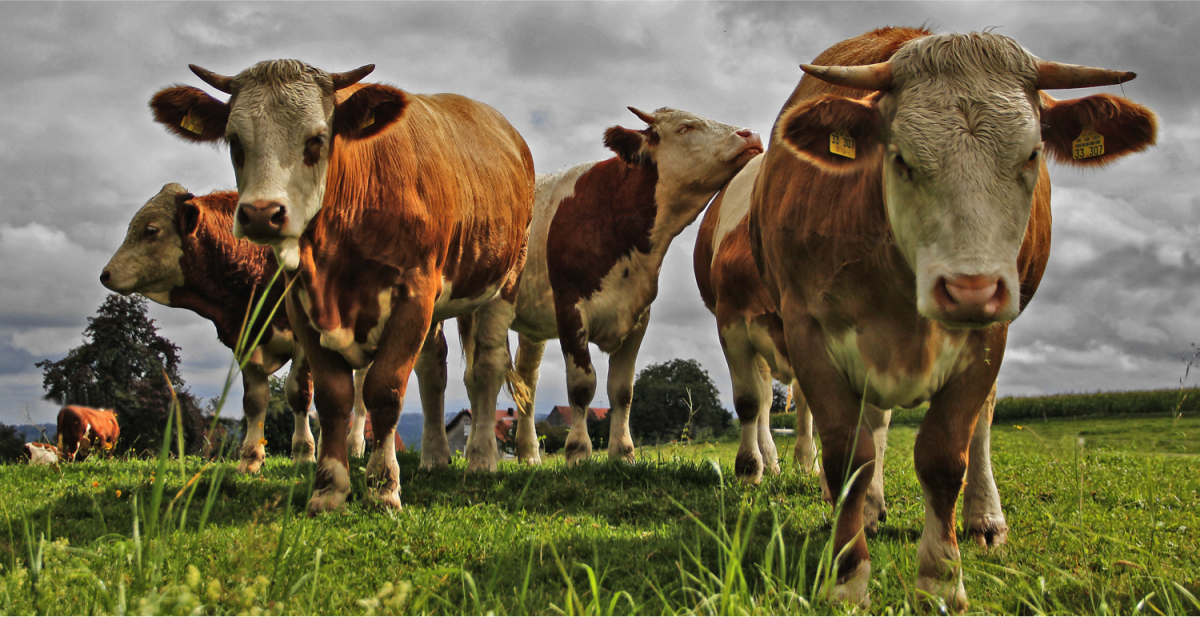February 11, 2019
 Agtech startup Agersens’ revolutionary virtual fencing technology was highlighted at last fall’s Women in Agribusiness Summit, a sister event to the Global AgInvesting series, where the company’s Sally Haynes prevailed over the Ag Innovation Hour panel, which showcased disruptive innovations that are changing the future of agriculture and food.
Agtech startup Agersens’ revolutionary virtual fencing technology was highlighted at last fall’s Women in Agribusiness Summit, a sister event to the Global AgInvesting series, where the company’s Sally Haynes prevailed over the Ag Innovation Hour panel, which showcased disruptive innovations that are changing the future of agriculture and food.
As chief scientist of animal behavior and welfare at the Australian company, Haynes was instrumental in the development of the company’s eShepherdTM product, the world’s first livestock virtual fence. The new technology is deployed via GPS-enabled, solar-powered neckbands for cattle, and managed through a smart device app. It automates grazing, fences cattle, and helps protect the environment. The software enables beef and dairy farmers to virtually monitor, muster, and move their cattle to desired locations, providing a myriad of benefits.
Haynes started with the company in 2015, joining founder Ian Reilly in the initial team of two that has grown to more than 50 employees. Since its launch, the company has been recognized as one of Melbourne’s top startups to watch for 2017, and one of the world’s top disruptive brands of 2017.
GAI News caught up with Haynes to learn more about this disruptive technology.
1. First, can you please explain how eShepherdTM works?
It’s a virtual fence for livestock that enables cattlemen (and women) to remotely fence and move their animals, and monitor them 24/7 wherever they are in the world using a smartphone, laptop, or PC. The animals wear a neckband that includes a device that is solar-powered and contains an algorithm that trains the animal as to where the fence is. It’s an algorithm that is very clearly based on animal behavior and teaches the animal to respond to the virtual, GPS-enabled fence through an audio sound. The farmer actually draws the virtual fence on their computer with their mouse, and GPS satellite imagery activates the fence. This information goes to the cloud which goes to the base station, and the message is sent to each neckband. Each neckband is autonomous – each individual neckband trains each individual animal and records information and behavior about what each animal is doing. And being solar-powered, there are no battery changes needed and the neckband can go a week without sun, and even then only requires a small amount of sun.
The farmer can draw fences over tough physical terrain or rivers or crops to train animals to stay out of areas you don’t want them to be in, without a physical fence. It can be used for cell grazing for various breeds of cattle. The training algorithm is a smart device, not a blunt instrument, as it’s really important that we don’t invoke a fear response in the animals. The animals always get an audio cue as they approach the fence before they would get a pulse so they have an opportunity to turn away. We’ve found that within two to five experiences, 80 percent of the cattle pair the audio with the pulse and realize they have to turn around when they get the audio. The cattle are curious though and we see them explore the fence line to find holes, which is helpful because if the farmer changes the fence, he wants them to move through that area to new pasture, and we’ve found they do that within a few hours.
2. How did the company get started? And what is your role?
People have been trying to do virtual fencing for years and years. About 10 years ago, a research organization in Australia came up with a welfare and animal behavior approach rather than an engineering approach, and they succeeded because they put the animal first. They developed a simple algorithm, which while not commercially viable, the knowledge and direction was set. My boss came upon this and did some background research and negotiated an exclusive license to the intellectual property, which we discovered needed much more finesse to be successful.
My role is to be the conduit between the developers and the cows – to show them how an animal learns and behaves, and to recommend training methods so they can continue to improve our product. I also spend a lot of time communicating what we’re doing to animal welfare organizations and government regulators.
I’ve never worked in a startup environment before. It’s one of those roles that I have never been bored with – everyday I learn something new. As someone who is obsessed with how animals learn and interact with us and each other, I am suddenly learning about software, hardware and more and experiencing the planning that goes along with it. It’s pretty exciting to see the development now. It’s not a product that you just make and walk away. It’s a constant cycle of learning.
3. How has this innovation created a new market and value network, displacing market leading products? What are the key benefits?
The virtual fence does not displace other products. It’s so transformative that there’s nothing else that it competes with. This is a product for those livestock producers who are on the cutting-edge, looking to monitor their animals very closely.
The product provides those cattle producers with the tech that they need to offset two major barriers for achieving greater productivity. One of them is the cost of labor required for fence installation, and the second barrier is scale. eShepherd allows farmers to scale up pretty quickly without having to put a lot of effort into dividing paddocks or worry too much about the logistical challenges of scaling up.
As far as benefits, reducing labor costs is extraordinary; more efficient grazing is realized, which is good for the farmer and the environment, and also allows for ecological grazing and environmental land management; and it is an environmentally-sustainable solution.
You still need good animal management – this is not the end of that. It’s a brilliant tool that allows livestock producers to focus on what they really need to do to increase productivity, knowing their animals are herded in a most humane way.
4. IoT technologies are still in their infancy in agtech applications. How has eShepherd been received by the industry?
We currently have neckbands on cattle in four different countries – Australia, the U.S., New Zealand, and Canada – and we have a massive waiting list.
We have had to keep quiet a bit about it to ensure testing in smaller applications before moving to larger opportunities. We are careful to understand the social behavior of a herd before we apply something that will affect that. So we test in-house extensively before we release any technology to our customers. That is part of our process – this is not an off-the-shelf product – this is an ongoing relationship with us as a company that includes training, data, monitoring, and feedback. We are very much a company that cares about our customers and their animals.
We started very small, with about a dozen animals so we could monitor each individually. We’ve built up to handling about 50 to 250 animals, and expect to increase that quite dramatically in the not-so-distant future.
Our next challenge will be managing the demand as it’s more of a market pull, than a technology push. This solution addresses such a broad range of problems that people have been having, and with the stronger push from consumers to know where their food comes from, as well as to know that the entire herd has been taken care of, we are seeing a lot of global interest.
Initially this was not the cheapest product to make in-house, however, our customers have said “it’s a no-brainer”, that this product delivers much more than it costs. Our producers are saying we want this, this is going to benefit us and it far outweighs the cost. And the neckbands are reusable so it begins to pay for itself.
5. Is there a time for commercialization of the product? And what is on the horizon for funding and product growth?
We have been manufacturing in-house for some time now, but the global distribution is set for mid-2019 through our distribution partner Gallagher, a New Zealand-based company that is very well known in the traditional fencing market. They have been one of our great supporters and investors, as have those in the private sector.
We’ve already raised more than $10 million to-date, and are currently raising further funding.
Data collection from the neckbands is going to be really big, and every time I talk to someone, whether in government or a stakeholder, they always have a new idea of how we can use this product. So though we’ve made great strides so far, I feel like we are just scratching the surface of the products’ capabilities about what it can offer to agriculture and the environment.
ABOUT SALLY HAYNES
Sally Haynes is chief scientist of animal behavior and welfare for Australian agri-tech company Agersens, bringing world-first virtual fencing technology to cattle ranchers globally. Haynes’ position as first employee has seen her wear many hats – research scientist, government lobbyist and media liaison – and enabled her to see Agersens grow from a two-person start-up to one of Melbourne’s most innovative companies, employing over 50 people across R&D, product development, data analytics, and manufacturing. Haynes is completing her PhD at the University of Melbourne, whilst also delivering lectures to undergraduate students as an expert on dog and cat behaviour. She is competitive with her own dogs in agility, obedience, and retrieving. She can be reached at shaynes@agersens.com.
ABOUT THE AUTHOR
Michelle Pelletier Marshall is managing editor for Global AgInvesting’s quarterly GAI Gazette magazine and a regular contributor to GAI News. She can be reached at mmarshall@globalaginvesting.com.

Let GAI News inform your engagement in the agriculture sector.
GAI News provides crucial and timely news and insight to help you stay ahead of critical agricultural trends through free delivery of two weekly newsletters, Ag Investing Weekly and AgTech Intel.




